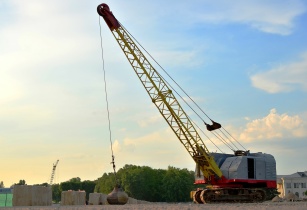The global crawler cranes market is set to experience a CAGR of 6% from 2021 to 2031, reaching US$7bn by the end of the forecast period, according to a market intelligence reports by Fact.MR
Short-term outlook also appears promising, with an expected growth rate of 7% until 2024. As of 2021, the market is likely to be valued at US$4bn.
From 2016 to 2020, crawler cranes sales surged at a CAGR of around 5%, closing in at US$3.8bn by the end of the said historical period. Prospects appeared to decline significantly amidst the COVID-19 pandemic, attributed to recessionary trends unfurling across the global construction and infrastructure industry. By Q4 2020, prospects appeared to rebound as restrictions lifted.
As per the report, manufacturers are capitalising on the ever broadening reliance on alternative energy resources. The Center for Climate and Energy Solutions (C2ES) establishes that in 2017, nearly 60% of energy demand was sourced from modern renewables, including biomass, geothermal, wind, solar, hydro and biofuels. Hence, extensive infrastructure development to harness the same is rising, paving way for increased demand for crawler cranes.
Key Takeaways from the Market Study
?Global crawler cranes demand to expand 1.8x from 2021 to 2031
?By boom type, telescope boom cranes likely to surge at 7% CAGR through 2031
?Construction to remain key end use industry, accounting for 60% of global demand
?U.S to emerge as an opportunistic market, accounting for over 2/5th of total sales
?Extensive infrastructure development projects to push crawler cranes demand in Europe at a CAGR of 6%
?Extensive reliance on wind energy as a prominent power source is generating new application avenues for crawler cranes, as new infrastructure projects for constructing windfarms gain momentum,? explained a senior research analyst.
Competitive Landscape
Strategic collaborations enable manufacturers to increase production and meet consumer demand which will increase revenue and market share. New products and technologies will enable end-users to benefit from products that are eco-friendly by nature.







